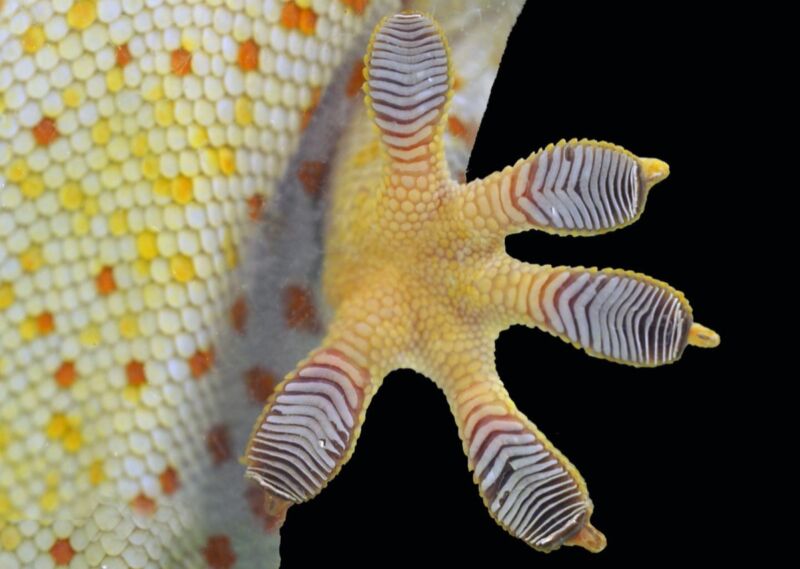Scientists gain fresh insight into the secret of how gecko feet stay sticky

Enlarge / Close-up of a Tokay gecko's toe pads. They have many tiny hairs per foot called setae, each of which splits off into hundreds of even smaller bristles called spatulae. These help maximize contact with a surface. (credit: Yi Song)
Geckos are known for being expert climbers, able to stick to any surface thanks to tiny hair-like structures on the bottoms of their feet. Along with colleagues in Oregon, Denmark, and Germany, researchers at the National Institute of Standards and Technology (NIST) took a closer look at those structures using high-energy synchrotron, revealing that they are coated with an ultra-thin layer of lipid molecules in an upright orientation, according to a recent paper published in the journal Biology Letters.
Those tiny microscopic hairs are called setae, each of which splits off into hundreds of even smaller bristles called spatulae. It has long been known that at microscopic size scales, the so-called van der Waals forces-the attractive and repulsive forces between two dipole molecules-become significant.
Essentially, the tufts of tiny hairs on gecko feet get so close to the contours in walls and ceilings that electrons from the gecko hair molecules and electrons from the wall molecules interact with each other and create an electromagnetic attraction. That's what enables geckos to climb smooth surfaces like glass effortlessly. Spiders, cockroaches, beetles, bats, tree frogs, and lizards all have varying-sized sticky footpads that use these same forces.